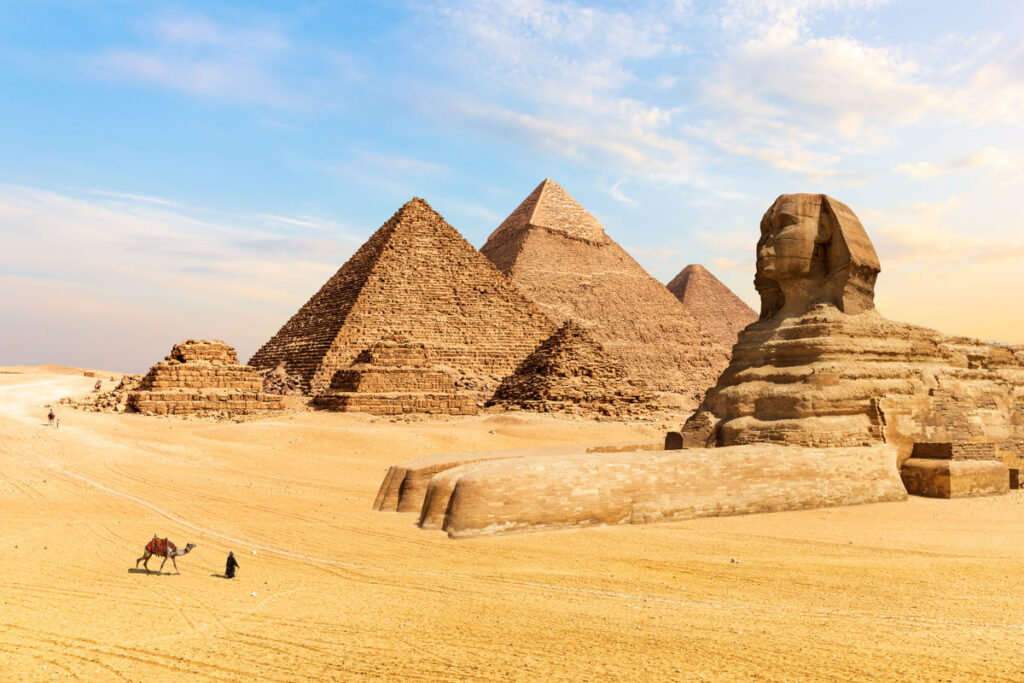Egypt. Think of this place, and surely your mind conjures up ancient wonders, the Nile River and awe-inspiring monuments sitting amid the desert sands.
But, nothing can prepare you for the feeling you get when you’re standing in the heart of a temple that’s over 3,000 years old; when you realize that the rich history of humanity didn’t just exist here, but that it still lives on.
For centuries, this land has attracted travelers, archaeologists and lovers of history from across the globe. But, to unlock its magic, to feel its rich history and also connect with the vibrancy of modern Egyptian life, you need to embark on a journey that embraces its celebrated landmarks and the legendary river that binds them.
My experience in Egypt wasn’t just a trip; it was an expedition into a civilization that has shaped millennia of life. What I discovered was a land filled with incredible monuments at every turn; a land where wonders from the past stand in stark contrast to modern cities; a land where every site deepens your appreciation for the people who built the foundation of human history.
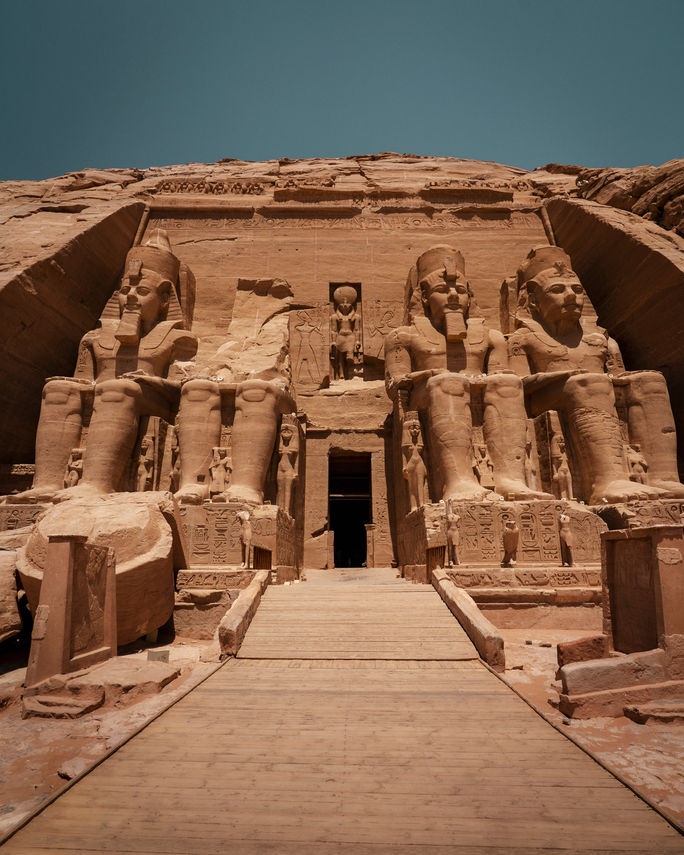
Exterior of the temple at Abu Simbel in Aswan, Egypt. (Photo Credit: Northstar Travel Group / Elliott Howell)
Cairo
My exploration began in the bustling city of Cairo. This city is a bridge between Egypt’s ancient past and its modern life. The sheer scale of the city, with its constant motion and energy, is an experience in itself.
You can’t visit Cairo without standing before the Pyramids of Giza and the iconic Sphinx. To say they are awe-inspiring is an understatement. They don’t just stand in the desert; they dominateit, serving as a testament to ingenuity that still puzzles us to this day.
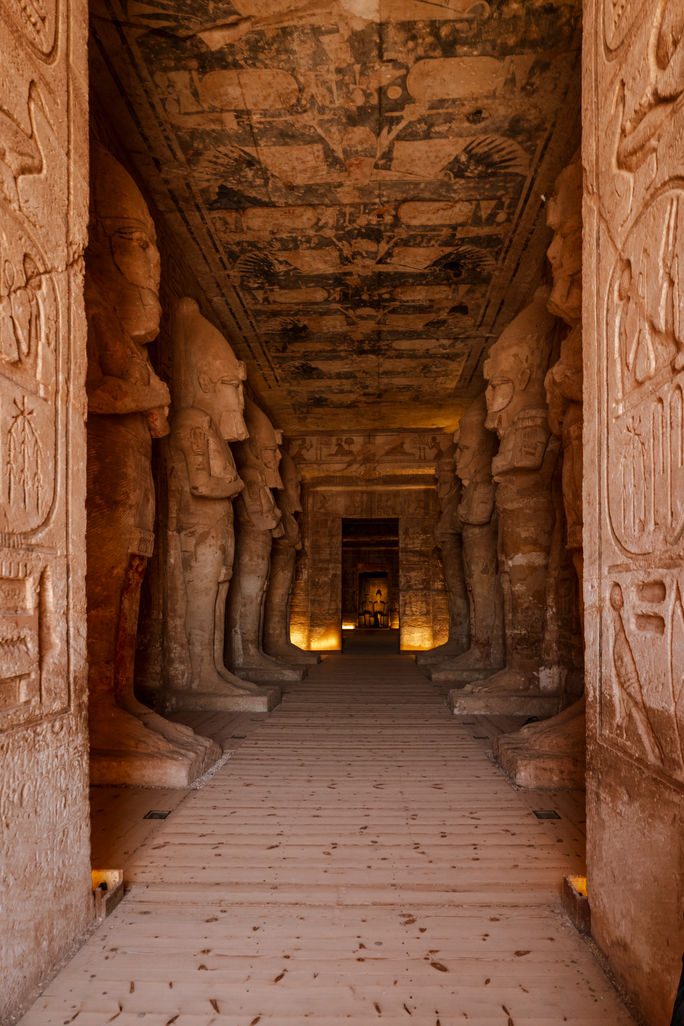
Interior view of the temple at Abu Simbel in Aswan, Egypt. (Photo Credit: Northstar Travel Group / Elliott Howell)
I’ll never forget standing there next to one of the pyramids, staring up at its face that led my eyes up to the sky, and the feeling of connection to history—a history that runs much deeper than just knowledge, information, dates and facts. Even with the crowds you’d expect at one of the most iconic (if not the most) sites in the world, the pyramids are a marvel.
You’d be remiss not to fully jump on the tourist bandwagon and opt for a camel ride in front of the pyramids. Quite possibly the most tourist-y thing I’ve ever done, but it was well worth it. When in Rome, right?
To further peel back the layers of history, a deep dive into the new Grand Egyptian Museum is key. Prepare to be overwhelmed (in the best way) by the sheer volume and artistry of the artifacts. As the largest archaeological museum in the world, GEM is home to artifacts that date back as far as 3100 BCE.

Guests riding camels in front of the Great Pyramids at Giza, Egypt. (Photo Credit: Northstar Travel Group / Elliott Howell)
Wandering through halls filled with treasures of Tutankhamun, exquisite jewelry and more, it’s easy to lose track of time as you imagine the lives of the people who created and used these objects.
While Cairo is steeped in ancient history, its modernity is felt in places like the alleys of the Khan El-Khalili Bazaar. This bustling market is a sensory overload, but the kind you’ll welcome. The spice, coffee, textiles, artisans at work, the banter of merchants—it’s a place to stock up on souvenirs while sipping mint tea and soaking up the bustle of commerce.
Be sure to also check out the nearby Citadel of Salah El-Din and the Mohamed Ali Mosque for panoramic views of the sparkling city. They’re a reminder of Cairo’s importance throughout history.
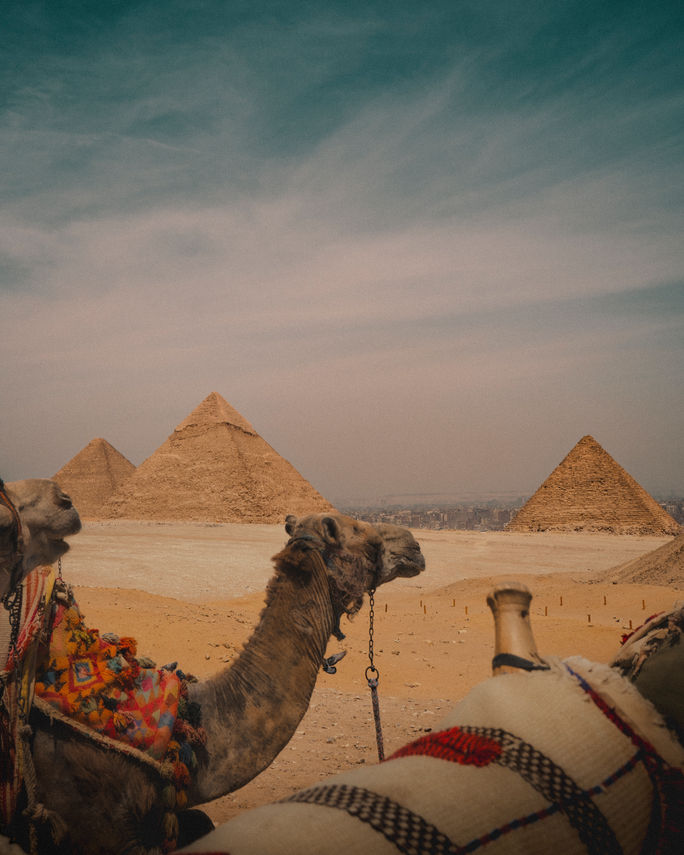
Camels sit in front of the Pyramids at Giza, Egypt. (Photo Credit: Northstar Travel Group / Elliott Howell)
Nile River
From Cairo, my journey took on a different pace, following the lifeblood of Egypt: the Nile River.
Embarking on a Nile River cruise proved to be a seamless way to enjoy the string of incredible sites that stretched along the riverbanks. And Viking’s Hathor ship offered luxury at every turn.
This state-of-the-art vessel was built specifically to navigate the Nile. Its elegant design meant returning home to elevated comfort after long days of exploring Egypt’s wonders. A small, comfortable, and manageable ship with room for just 82 guests, the food, service, and serenity on board made for the ideal way to experience the richness of this country.
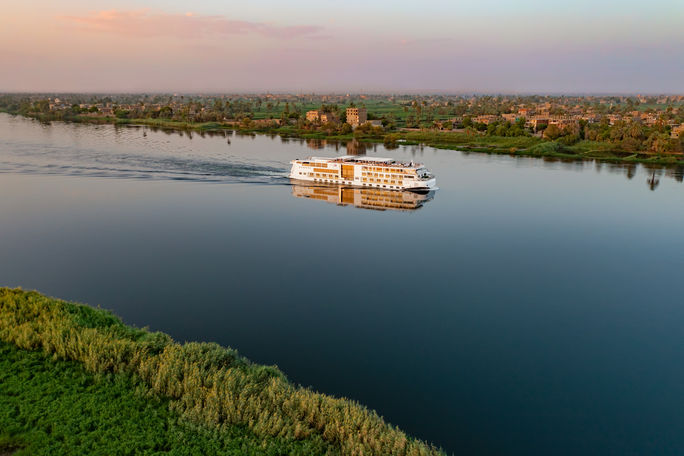
The Viking Hathor cruises the Nile River, Egypt. (Photo Credit: Viking)
Additionally, the ease of having all the details of the trip sorted by Viking, with my only responsibility being to show up and explore, is something I did not take for granted.
If you’re like I was—overwhelmed with the idea of planning a trip to see all that Egypt has to offer—a Nile River cruise takes the stress out of the logistics so you can focus on adventure.
Our days on the Nile were perfectly scheduled with shore excursions to some of Egypt’s most magnificent temples and sites. And here are the ones you don’t want to miss.
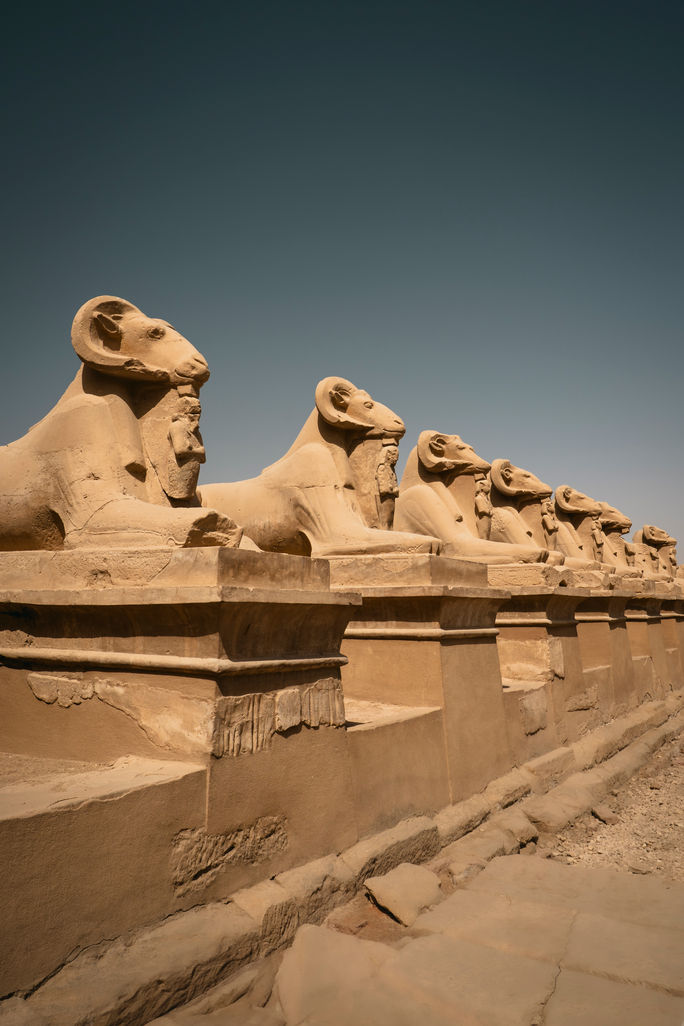
Exterior of the Karnak Temple at Luxor, Egypt. (Photo Credit: Northstar Travel Group / Elliott Howell)
Luxor
First on the itinerary: Luxor. Known as the world’s largest open-air museum, Luxor was a definite highlight. Walking through the Karnak Temple complex with its towering obelisks felt like being transported to a world of giants
The scale of the columns, covered in vivid hieroglyphs, made me feel small yet connected to the artistry of the people who built them.
A trip to the Luxor Temple was another magical experience, especially as dusk started to fall and the grandeur of the temple shone in a new light.
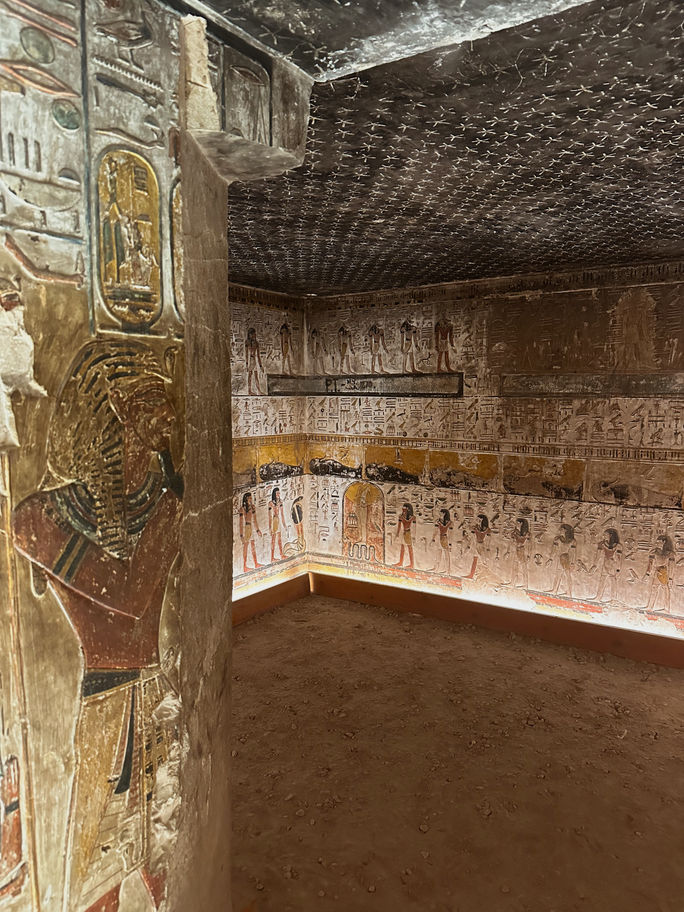
Interior of a tomb in the Valley of the Kings, Egypt. (Photo Credit: Northstar Travel Group / Leslie K. Hughes)
But my personal highlight of Luxor sat across the Nile. The Valley of the Kings offered a unique glimpse into the importance the Egyptians placed on the afterlife. Nestled within the barren hills of the West Bank are the extravagantly decorated tombs of pharaohs.
So far, 64 tombs have been discovered, 11 of which are open to the public. Their vibrant wall paintings have been preserved for millennia. Each tomb in the valley tells a unique story, and illustrates the ancient Egyptians’ beliefs in what happened after this life.
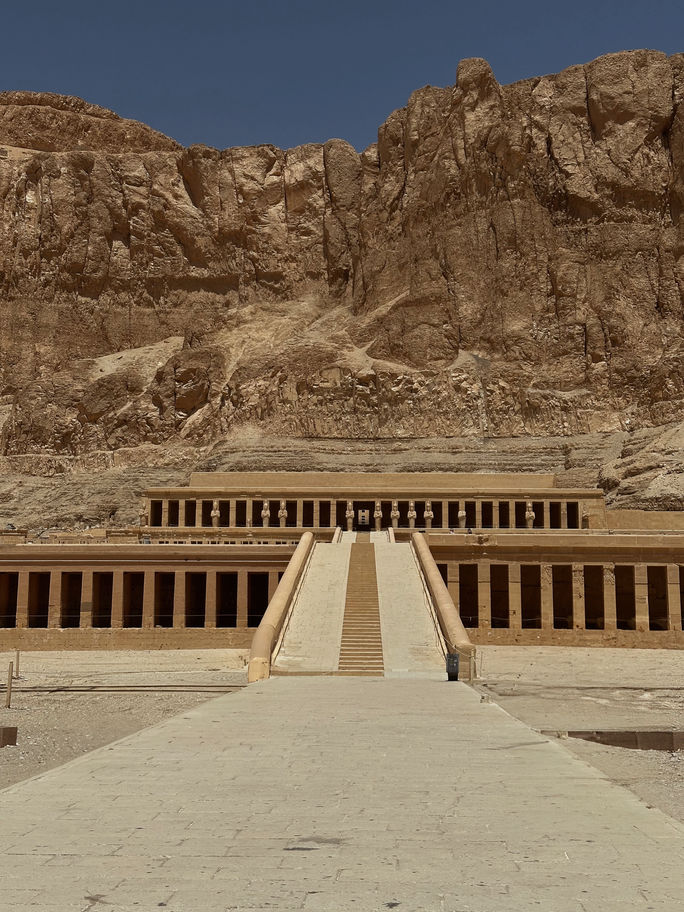
Exterior of the Temple of Hatshepsut in Deir el-Bahari, Egypt. (Photo Credit: Northstar Travel Group / Leslie K. Hughes)
The most notable tomb here is that of Tutankhamen, where his mummy is on display. However, possibly the most impressive tomb is that of Seti I, along with the famous tomb of Queen Nefertari.
Nearby the Valley of the Kings is the Temple of Hatshepsut, carved into the cliffs of Deir el-Bahari. This temple stands as a wildly stunning tribute to one of Egypt’s most powerful female rulers. Its terraced design reigns as an icon in the desert.
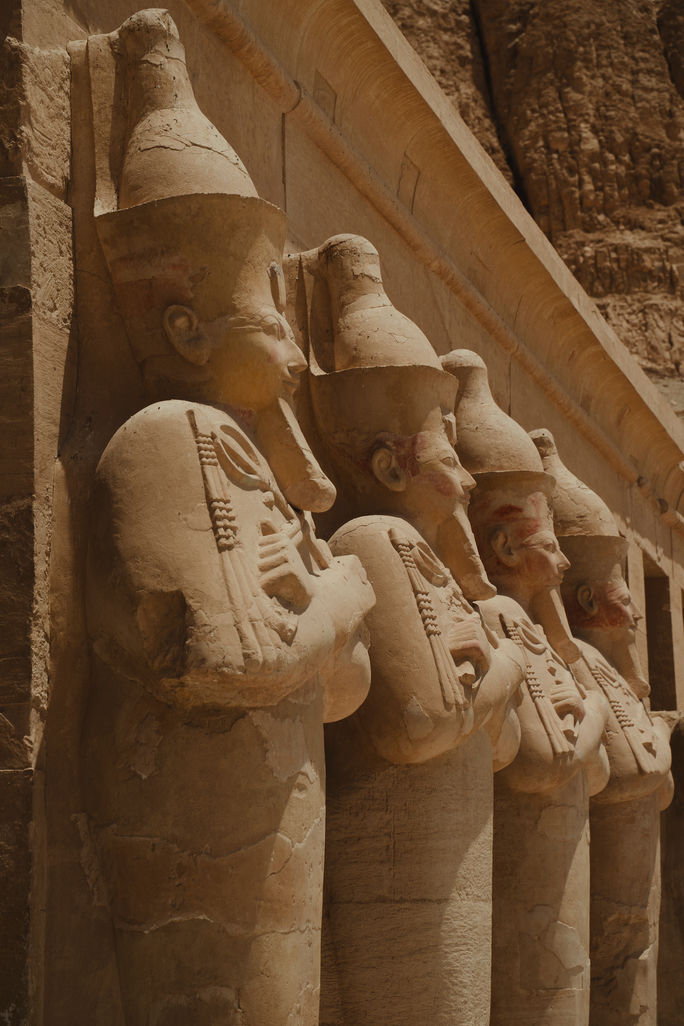
Statues at the Temple of Hatshepsut in Deir el-Bahari, Egypt. (Photo Credit: Northstar Travel Group / Elliott Howell)
Qena
Continuing further along the Nile, we visited the incredible Dendera Temple near Qena. One of Egypt’s best-preserved temple complexes, Dendera, is richly decorated and displays original blue coloring that will stun you.
And, if hot air balloons are your cup of tea, Qena is the spot to take in the incredible sights of Egypt from a bird’s-eye view as you rise above the west bank of the Nile.
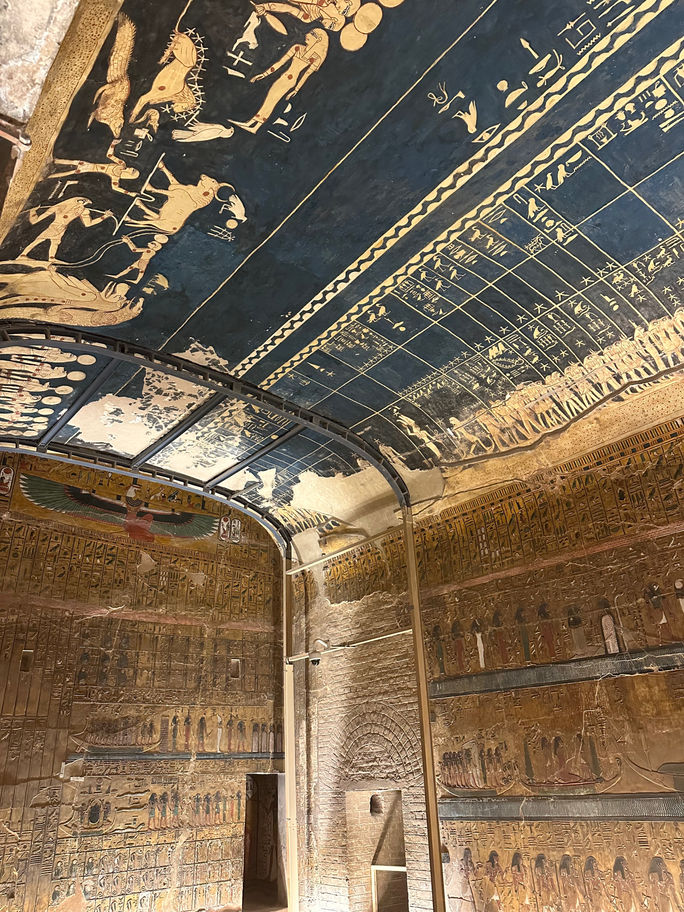
Interior room of the Dendera Temple near Qena, Egypt. (Photo Credit: Northstar Travel Group / Leslie K. Hughes)
Esna
Home to the ancient Temple of Esna, this stop on the Nile River journey is known for its first-century Roman Hypostyle Hall’s 24 columns. Recent restoration has unveiled the column’s detailed carvings and colors, showcasing the artistry of the ancient Egyptians
This temple is also known for its zodiac depiction, proving that ancient Egyptians were well-versed in astronomy.
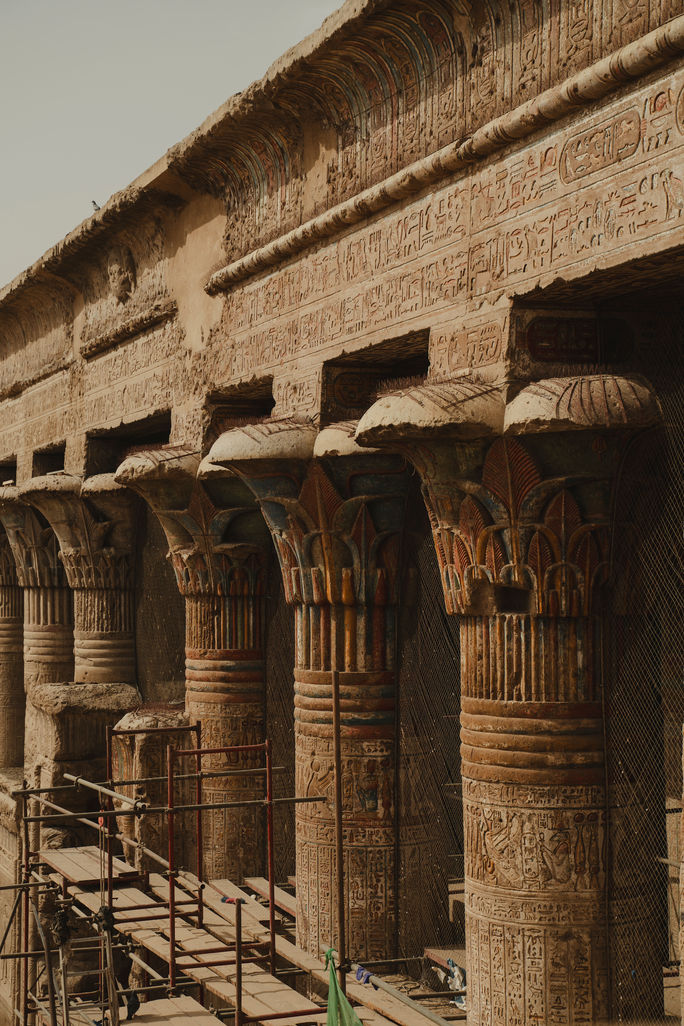
Exterior columns at the Temple of Esna, Egypt. (Photo Credit: Northstar Travel Group / Elliott Howell)
Aswan
Further south, Aswan revealed a very peaceful side of the Nile. Here, the landscape softens, with granite outcroppings and islands dotting the river.
A great way to experience this part of the area is via a felucca. This traditional sailing boat, with its rustling sail, was the perfect complement to the grandeur of the temples.
Back on the cruise ship, we sailed past Elephantine Island and the Aswan High Dam, a modern marvel that stands out among the ancient feats of engineering in the region. The construction of this dam presented some challenges to the area, including the preservation of the Philae Temple.
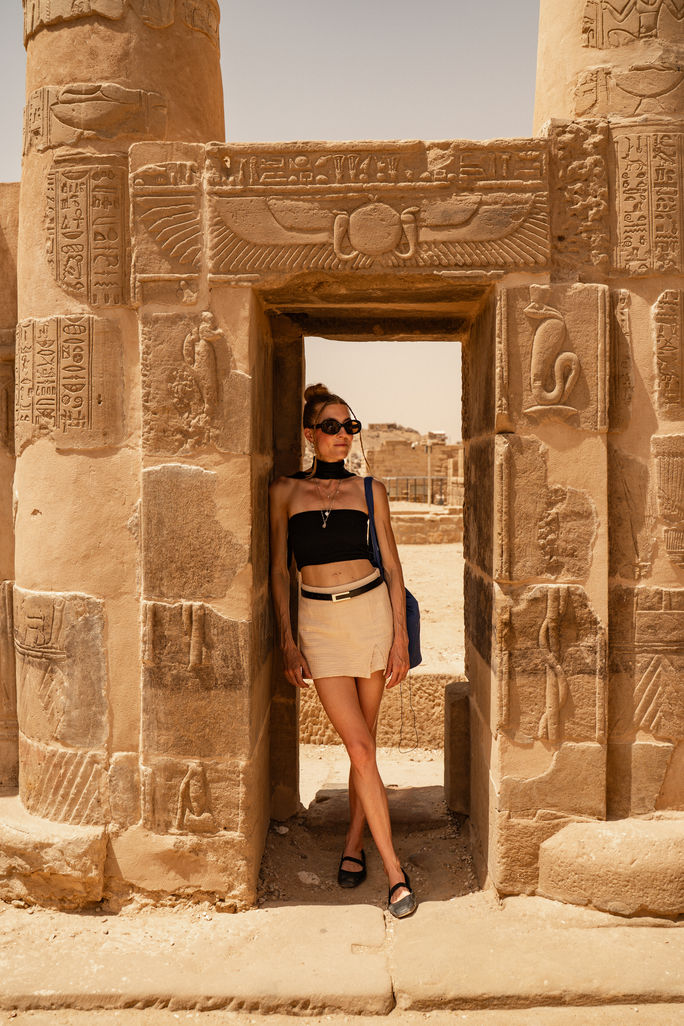
Tourist at the Philae Temple in Aswan, Egypt. (Photo Credit: Northstar Travel Group / Leslie K. Hughes)
This temple, dedicated to the goddess Isis, exists today as a feat of conservation. Rescued from the rising waters of the Aswan Dam, Philae was relocated to Agilkia Island. This rescue mission from its original home on Philae Island was part of the UNESCO Nubia Campaign Project, a nine-year project that protected several complexes before the dam was completed.
Today, you can take a peaceful boat ride to the new home of Philae Temple and wonder how they were actually able to move and reconstruct this massive structure so seamlessly.
The area of Aswan is also home to Nubian villages, ancient colorful settlements along the Nile that still exist (and thrive) today. Homes here are painted in blues, greens and yellows, offering a vibrant visual experience. The villages are home to traditions that the Nubian people have followed for thousands of years, including the crafting of beautiful and colorful jewelry.
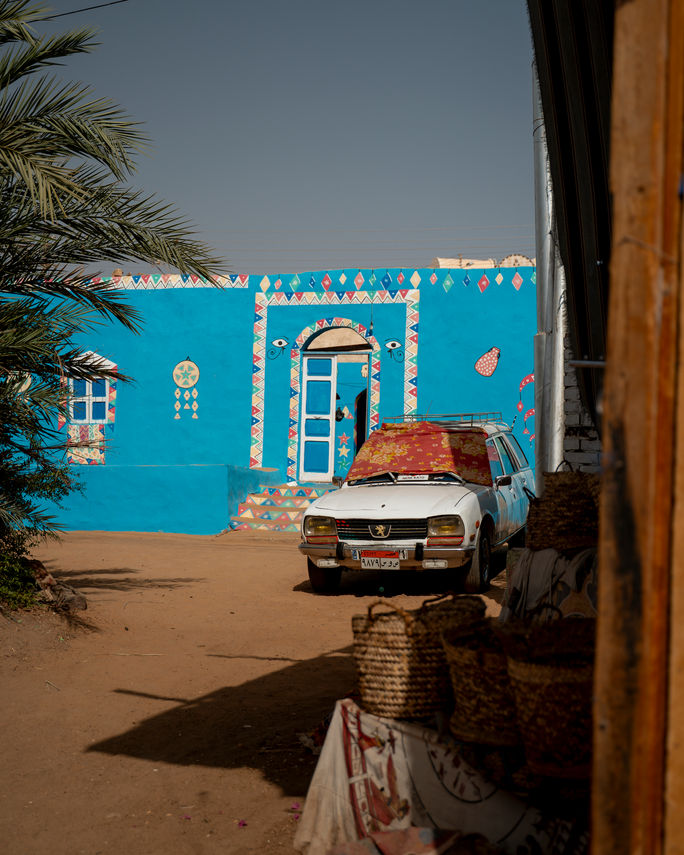
Colorful Nubian dwellings in Aswan, Egypt. (Photo Credit: Northstar Travel Group / Elliott Howell)
Edfu
Making your way back up the Nile, you’ll come to Edfu, where the ancient Edfu Temple sits as one of Egypt’s most complete ancient shrines.
Buried under the desert sands for over 2,000 years, construction on Edfu Temple started in 237 BCE to honor Horus (by Egyptian standards, this means it’s considered “new”).
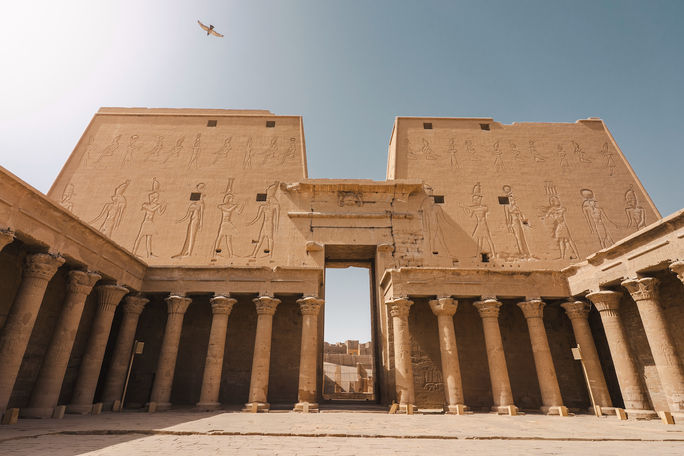
Exterior of the Edfu Temple, Egypt. (Photo Credit: Northstar Travel Group / Elliott Howell)
This account merely touches on the sights to see in Egypt, and more is being discovered every day. All that this country has to offer is overwhelming, in the most beautiful way. While iconic sites like the pyramids and temples are the main draws, the true richness of a visit to Egypt lies in embracing the sheer scale of history and the beauty of its locations that will take your breath away. To stand in these temples and realize they were built thousands of years ago is nothing short of mind-blowing. Once you’ve seen the wonders of Egypt, it feels as if everything else may pale in comparison.
For the latest travel news, updates and deals, subscribe to the daily TravelPulse newsletter.

